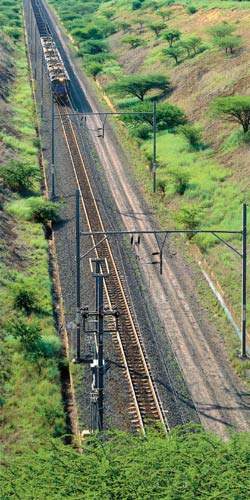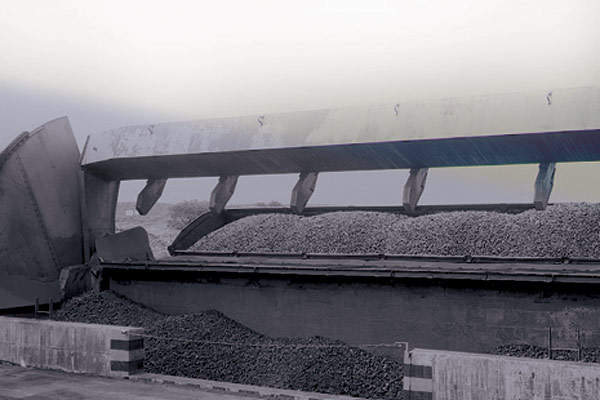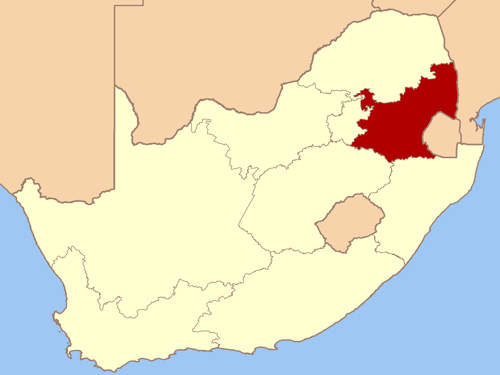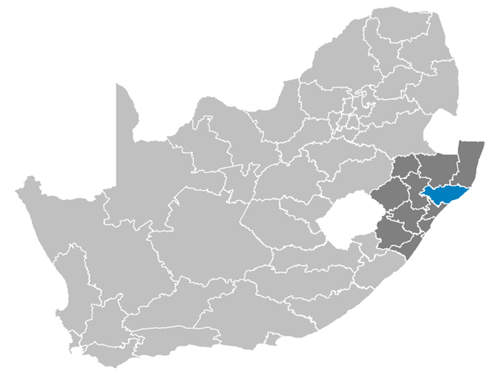Freight Rail is the largest division of rail operator Transnet and has approximately 25,000 employees throughout South Africa. It maintains an extensive rail network across the country that connects with other rail networks in the sub-Saharan region, with its rail infrastructure representing about 80% of Africa’s total.
Transnet Freight Rail’s core business lies in freight logistics solutions designed for industries such as mining and heavy and light manufacturing. On the Mpumalanga to Richards Bay line, minerals, grain and fuel are transported.
Coal is a vital export commodity, generating billions of Rands in foreign exchange earnings for South Africa and deserving its pseudonym ‘Black Gold’. COALlink is a specialist business unit that provides transport for South Africa’s export coal from the Mpumalanga coalfields to the Richards Bay coal terminal.
The project
From three possible sites for a new harbour, the choice was Richards Bay. Reasons include the large lagoon; the ease of dredging; direct link with the national rail network; an adjacent town, Empangeni, to stimulate initial development; and ample fresh water.
Built in 1976, RBCT is the country’s premier bulk port and the most modern. Richards Bay handles in excess of 80 million tonnes annually, representing 55% of South Africa’s seaborne cargo. This makes it the country’s largest port in terms of volumes handled.
Other rail links connect Richards Bay with Durban in the south and Swaziland and Mpumalanga to the north. There is an adequate road system to Gauteng, Swaziland, Mozambique and Mpumalanga, and a road south to Durban.
The port occupies 2,157ha of land area and 1,495ha of water area, but has the possibility of expanding when required, making Richards Bay potentially one of the largest ports worldwide. Richards Bay serves the coalfields of KwaZulu Natal and Mpumalanga Province as well as timber and granite exporters from as far away as the East Cape and Northern Cape Provinces.
Starting at Mpumalangas’s 44 coal-rich mines, the 580km rail line descends from the Highveld through rural KwaZulu-Natal and terminates at Richards Bay. The double line is bi-directionally signalled and fully electrified.
It also delivers coal and related products domestically and for exports via Durban and Maputo. A dedicated railway line connecting the Richards Bay Coal Terminal (RBCT) port with Mpumalanga Province and Gauteng was designed specifically to handle the majority of South Africa’s coal exports. It was also necessary to provide a deepwater port to accommodate the new large bulk carriers.
Security
In an effort to enhance its security and protect its highly distributed assets and buildings across South Africa, Transnet has decided to implement the intelligent security solution along the Richard’s Bay line and across its network. The company will standardise on NICE, undertaking a multi million-dollar project to implement NiceVision Net, NICE’s end-to-end solution for IP video security.
The security solution will enable Transnet Rail to monitor and record all the images from IP video surveillance cameras located throughout 670 sites. This will also ensure safe movement of all assets being transported across the rail network.
The NiceVision Net architecture comprises video security components needed for surveillance including encoders, network video recorders (NVRs) and control room visualisation. The components will allow Transnet Freight Rail surveillance systems to be tailored precisely to the needs of individual sites.
Rolling stock
The fleet size of Coaline wagons is 8,012 whereas 7,327 are available for use. Similarly in locomotives, Coaline’s fleet size is 310, out of which 285 are available for use.
Wagons are usually joined at Ermelo, typically using CCL type wagons. These trains stretch 2.5km and are loaded to 20,800t.
Coal and related commodities are moved in open-topped wagons for large-volume, siding-to-siding consignments or in open-topped containers for door-to-door, smaller loads.
The consignments are moved with branding by transporting in identifiable as well as well-structured containers. This enhances the status of coal, from that of a commodity to that of a branded product and has the advantage of maintaining quality levels by avoiding the problems associated with common stockpiling and conveyance.
The future
In the strategic five-year capex plan (2007–12) Transnet plans to invest a total of R34,822bn in freight rail alone, which is the highest (44.6%) of all its investments.
There are also plans for over 1,000 new wagons which would be built under the new capex programme to accommodate the expected increase in tonnages. These wagons are expected to be inducted in late 2009. New locomotives are also set to be procured, signalling systems improved and formation reinforced.
Transnet operates as an integrated freight transport company, formed around a core of five operational divisions that complement each other; one of which is Transnet Freight Rail. Freight Rail plans to be a global leader in operations on the 1,000mm and 1,067 mm (narrow gauge) rail networks of the world, especially in Africa.
Through its railway operations, Freight Rail hopes to become a significant global player in the provision of freight logistics solutions to its customers on the African continent and beyond. The International Joint Ventures (IJV) business is Freight Rail’s vehicle for achieving this and other objectives outside the company’s normal areas of activity. IJV is responsible for all Freight Rail activities outside South Africa as well as for all non-core activities and joint ventures within South Africa.





